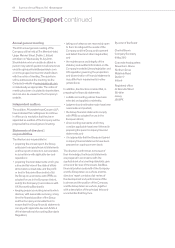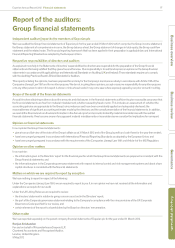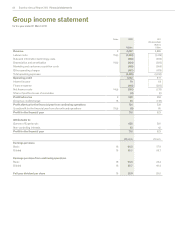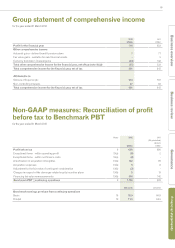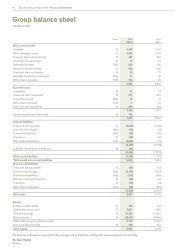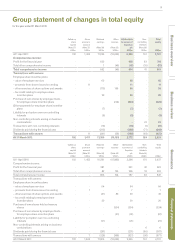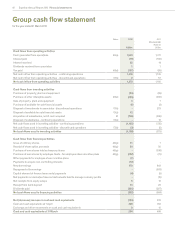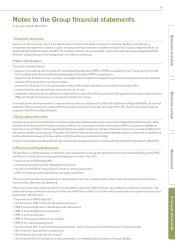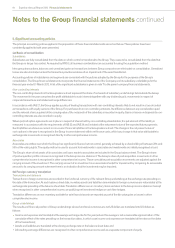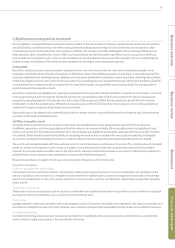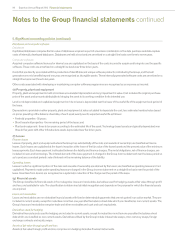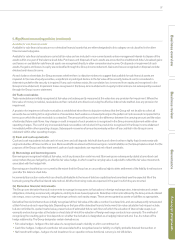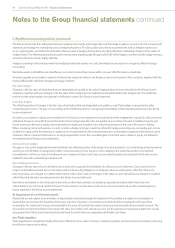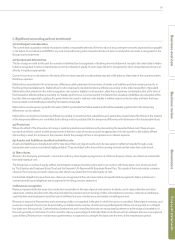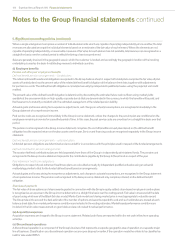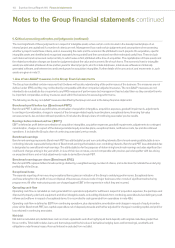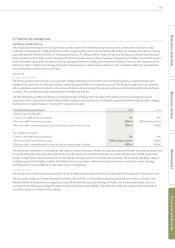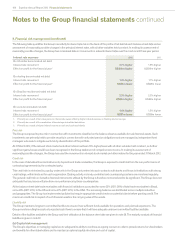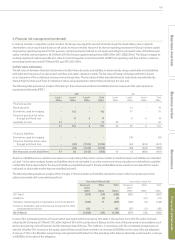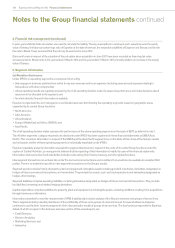Experian 2012 Annual Report Download - page 98
Download and view the complete annual report
Please find page 98 of the 2012 Experian annual report below. You can navigate through the pages in the report by either clicking on the pages listed below, or by using the keyword search tool below to find specific information within the annual report.
96 Experian Annual Report 2012 Financial statements
Notes to the Group financial statements continued
5. Significant accounting policies (continued)
Databases and computer software
Databases
Capitalised databases comprise the fair value of databases acquired as part of a business combination or the data purchase and data capture
costs of internally developed databases. Databases are held at cost and are amortised on a straight line basis over three to seven years.
Computer software
Acquired computer software licences for internal use are capitalised on the basis of the costs incurred to acquire and bring into use the specific
software. These costs are amortised on a straight line basis over three to ten years.
Costs that are directly associated with the production of identifiable and unique software products controlled by the Group, and that will
generate economic benefits beyond one year, are recognised as intangible assets. These internally generated software costs are amortised on a
straight line basis over three to ten years.
Other costs associated with developing or maintaining computer software programmes are recognised as an expense as incurred.
(e) Property, plant and equipment
Property, plant and equipment is held at cost less accumulated depreciation and any impairment in value. Cost includes the original purchase
price of the asset and amounts attributable to bringing the asset to its working condition for its intended use.
Land is not depreciated and capitalised equipment on hire or lease is depreciated over the lower of the useful life of the equipment and period of
the lease.
Depreciation is provided on other property, plant and equipment at rates calculated to depreciate the cost, less estimated residual value based
on prices prevailing at the balance sheet date, of each asset evenly over its expected useful life as follows:
•Freehold properties - 50 years;
•Short leasehold properties - the remaining period of the lease; and
•Plant and equipment - three to ten years according to the estimated life of the asset. Technology based assets are typically depreciated over
three to five years with other infrastructure assets depreciated over five to ten years.
(f) Leases
Finance leases
Leases of property, plant and equipment where the Group has substantially all the risks and rewards of ownership are classified as finance
leases. Such leases are capitalised at the lease’s inception at the lower of the fair value of the leased asset and the present value of the minimum
lease payments. Each lease payment is allocated between the liability and finance charges. The rental obligations, net of finance charges, are
included in loans and borrowings. The interest element of the lease payment is charged in the Group income statement over the lease period so
as to produce a constant periodic rate of interest on the remaining balance of the liability.
Operating leases
Leases in which a significant portion of the risks and rewards of ownership are retained by the lessor are classified as operating leases and not
capitalised. Payments made under operating leases are charged in the Group income statement on a straight line basis over the period of the
lease. Incentives from lessors are recognised as a systematic reduction of the charge over the period of the lease.
(g) Financial assets
The Group classifies its financial assets in four categories: loans and receivables, derivatives used for hedging, assets at fair value through profit
and loss, and available for sale. The classification is determined at initial recognition and depends on the purpose for which the financial assets
are acquired.
Loans and receivables
Loans and receivables are non-derivative financial assets with fixed or determinable payments that are not quoted in an active market. They are
included in current assets, except for maturities more than one year after the balance sheet date which are classified as non-current assets. The
Group’s loans and receivables comprise trade and other receivables and cash and cash equivalents.
Derivatives used for hedging
Derivative financial assets used for hedging are included in current assets, except for maturities more than one year after the balance sheet
date which are classified as non-current assets. Derivatives utilised by the Group include interest rate swaps, cross currency swaps, foreign
exchange contracts and equity swaps.
Assets at fair value through profit and loss
Assets at fair value through profit and loss comprise non-hedging derivative financial instruments.


